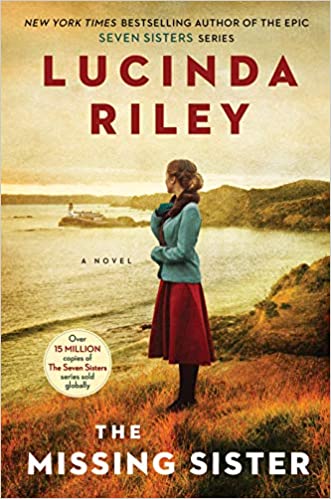
Lucinda Riley’s The Missing Sister continues the sweeping saga of the D’Aplièse family in what was meant to be the penultimate chapter of her beloved Seven Sisters series. With breathtaking locations, interwoven timelines, and the emotional intensity that fans have come to expect, this installment brings the six sisters together for one final mission: to find the seventh sister who has eluded them all. While not without flaws, this deeply emotional story carries the beauty, mystery, and heart that made Riley one of the most cherished voices in historical fiction.
The Story
The six D’Aplièse sisters have each followed their own paths to uncover their origins, guided by clues left behind by their adoptive father, the enigmatic Pa Salt. Now, they unite for their most important search yet finding the missing seventh sister. The only clue they have is a photograph of a star-shaped emerald ring. Their journey spans continents, from the lush landscapes of New Zealand to the windswept coastlines of Ireland, weaving together past and present as they follow a trail that connects generations.
Their search leads them to a woman named Mary, known to her friends as Merry, who lives a quiet life with her family in Ireland. She has no idea of her possible connection to the D’Aplièse sisters and resists their attempts to draw her in. As the sisters travel across the globe in pursuit, Merry’s own family history begins to unravel, revealing a story of courage, sacrifice, and forbidden love that stretches back nearly a century.
A Journey Across Time and Generations
Riley’s gift has always been her ability to blend sweeping historical backdrops with the emotional intimacy of family drama. In The Missing Sister, the past storyline set in Ireland stands out as the novel’s most compelling thread. Through the lives of Mary and her ancestors, Riley explores Ireland’s turbulent political landscape a time of struggle, identity, and resilience. These chapters are written with her signature warmth and depth, grounding the novel’s more modern storyline in history and emotion.
The historical scenes are where the novel shines most brightly. As Lori Elliott noted, the Irish setting and the relationship between Ambrose and Father O’Brien are particularly moving, filled with authenticity and quiet grace. Riley’s prose here captures both the beauty of the countryside and the heartbreak of a nation divided.
The Sisters’ Quest
In contrast, the contemporary plotline is more uneven. The six D’Aplièse sisters each now familiar to longtime readers come together in a globe-spanning hunt that sometimes feels more chaotic than cohesive. Their determination to track down Merry borders on obsession, and the “pursuit” sections, where each sister takes turns following her across the world, can feel excessive. Kerri’s observation captures this perfectly: while it’s fun to revisit each sister and see how far they’ve come, the logistics of their mission stretch plausibility.
Still, there’s undeniable joy in being reunited with these characters. Their interactions, filled with affection, frustration, and humor, remind readers why this series has captured so many hearts. Riley’s ability to make each sister distinct from gentle Tiggy to headstrong CeCe gives these scenes emotional resonance, even when the plot itself falters.
Themes of Connection and Identity
At its core, The Missing Sister explores what it means to belong to a family, a place, and a legacy. Merry’s resistance to the sisters’ intrusion is understandable: she already has a loving family and a full life, and the idea of suddenly belonging to someone else’s story is unsettling. This conflict adds a welcome layer of realism to a series that often balances the mystical with the emotional.
As the search unfolds, Riley reflects on love in its many forms maternal, romantic, and sisterly and how loss and longing can echo across generations. Even when the narrative stumbles, the emotional truth of these themes keeps readers invested.
Writing and Structure
Riley’s lush, descriptive style remains her signature strength. She paints vivid portraits of every setting the green fields of Ireland, the rugged shores of New Zealand, and the quiet streets of Paris. However, the novel’s 550-page length may test the patience of some readers. The pacing wavers, with long passages of dialogue and frequent callbacks to earlier books that can feel like filler rather than forward momentum.
The dialogue, especially in the opening chapters, occasionally feels stilted or overly formal, lacking the natural warmth that characterized earlier installments. Yet as the story progresses, Riley finds her rhythm again, particularly in the historical chapters that remind us of her mastery of emotional storytelling.
A Bittersweet Legacy
Reading The Missing Sister is tinged with poignancy knowing that Lucinda Riley passed away shortly after its publication. Her note at the end, referencing her plans for the series’ conclusion, feels especially moving. It’s comforting to know that her son, Harry Whittaker, will complete the saga she began, ensuring that readers will finally learn the full story of Pa Salt.
Despite its imperfections, this novel remains a testament to Riley’s unique storytelling gift her ability to weave history, mystery, and emotion into a seamless whole. It’s not the strongest entry in the series, but it carries the heart and soul that make the Seven Sisters books so beloved.
Final Thoughts
The Missing Sister is a sprawling, emotional adventure about the bonds of family and the quest for identity. While the pacing falters and the dialogue sometimes leans toward the melodramatic, the novel’s emotional resonance and rich historical detail make it a worthy addition to the series. The Irish storyline alone is worth the journey haunting, romantic, and deeply human.
For fans who have followed the D’Aplièse sisters from the very beginning, this book is a heartfelt reunion and a bridge to the series’ long-awaited conclusion.
Lucinda Riley’s words remind us that life’s beauty lies not in answers, but in the journey itself: “Through the pain and the joy of the journey, I have learnt the most important lesson life can offer the moment is all we have.”
Buy the book here: https://amzn.to/471ZUQ9


